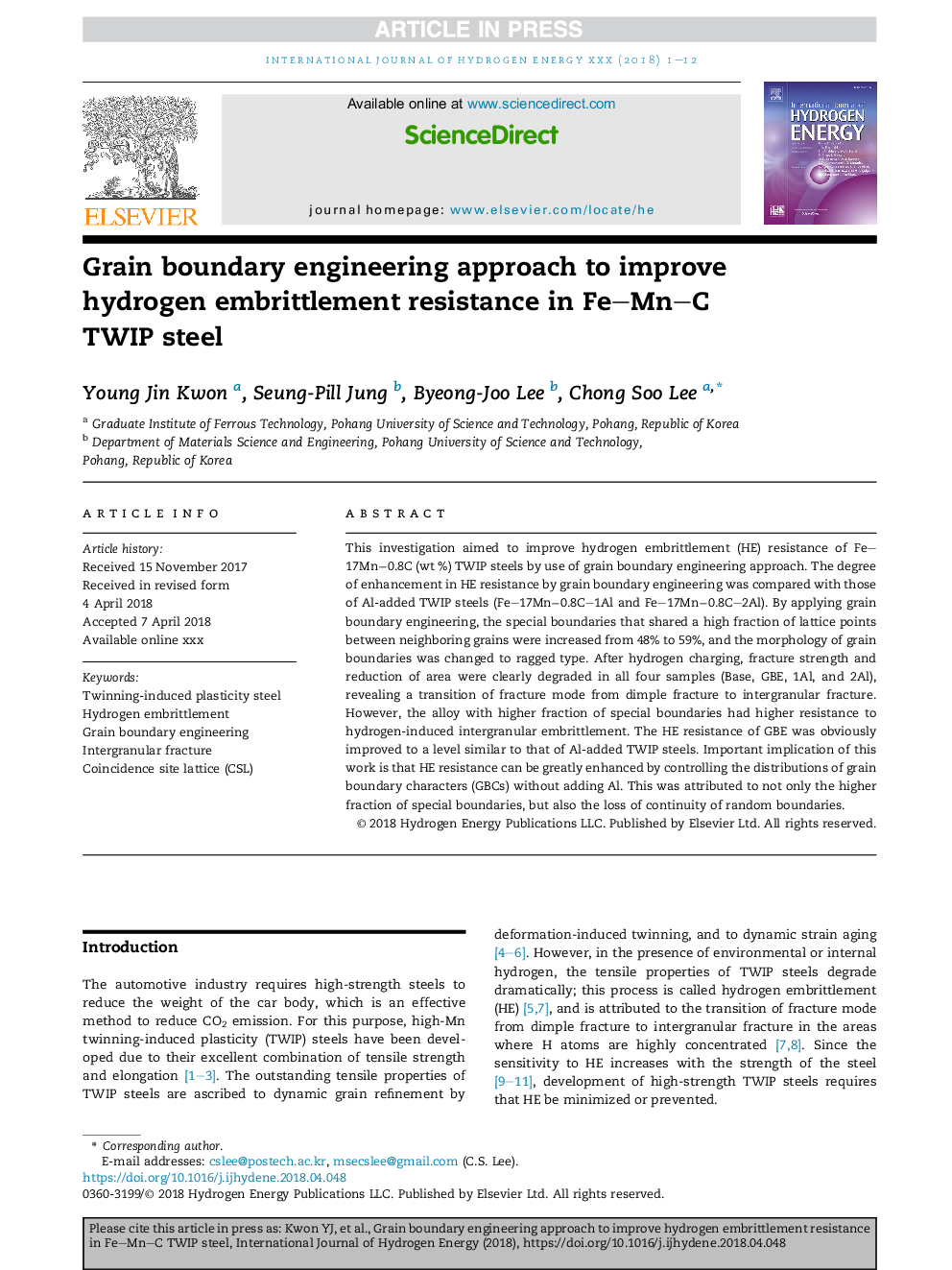| Article ID | Journal | Published Year | Pages | File Type |
|---|---|---|---|---|
| 7706029 | International Journal of Hydrogen Energy | 2018 | 12 Pages |
Abstract
This investigation aimed to improve hydrogen embrittlement (HE) resistance of Fe17Mnâ0.8C (wt %) TWIP steels by use of grain boundary engineering approach. The degree of enhancement in HE resistance by grain boundary engineering was compared with those of Al-added TWIP steels (Fe17Mnâ0.8C1Al and Fe17Mnâ0.8C2Al). By applying grain boundary engineering, the special boundaries that shared a high fraction of lattice points between neighboring grains were increased from 48% to 59%, and the morphology of grain boundaries was changed to ragged type. After hydrogen charging, fracture strength and reduction of area were clearly degraded in all four samples (Base, GBE, 1Al, and 2Al), revealing a transition of fracture mode from dimple fracture to intergranular fracture. However, the alloy with higher fraction of special boundaries had higher resistance to hydrogen-induced intergranular embrittlement. The HE resistance of GBE was obviously improved to a level similar to that of Al-added TWIP steels. Important implication of this work is that HE resistance can be greatly enhanced by controlling the distributions of grain boundary characters (GBCs) without adding Al. This was attributed to not only the higher fraction of special boundaries, but also the loss of continuity of random boundaries.
Keywords
Related Topics
Physical Sciences and Engineering
Chemistry
Electrochemistry
Authors
Young Jin Kwon, Seung-Pill Jung, Byeong-Joo Lee, Chong Soo Lee,
